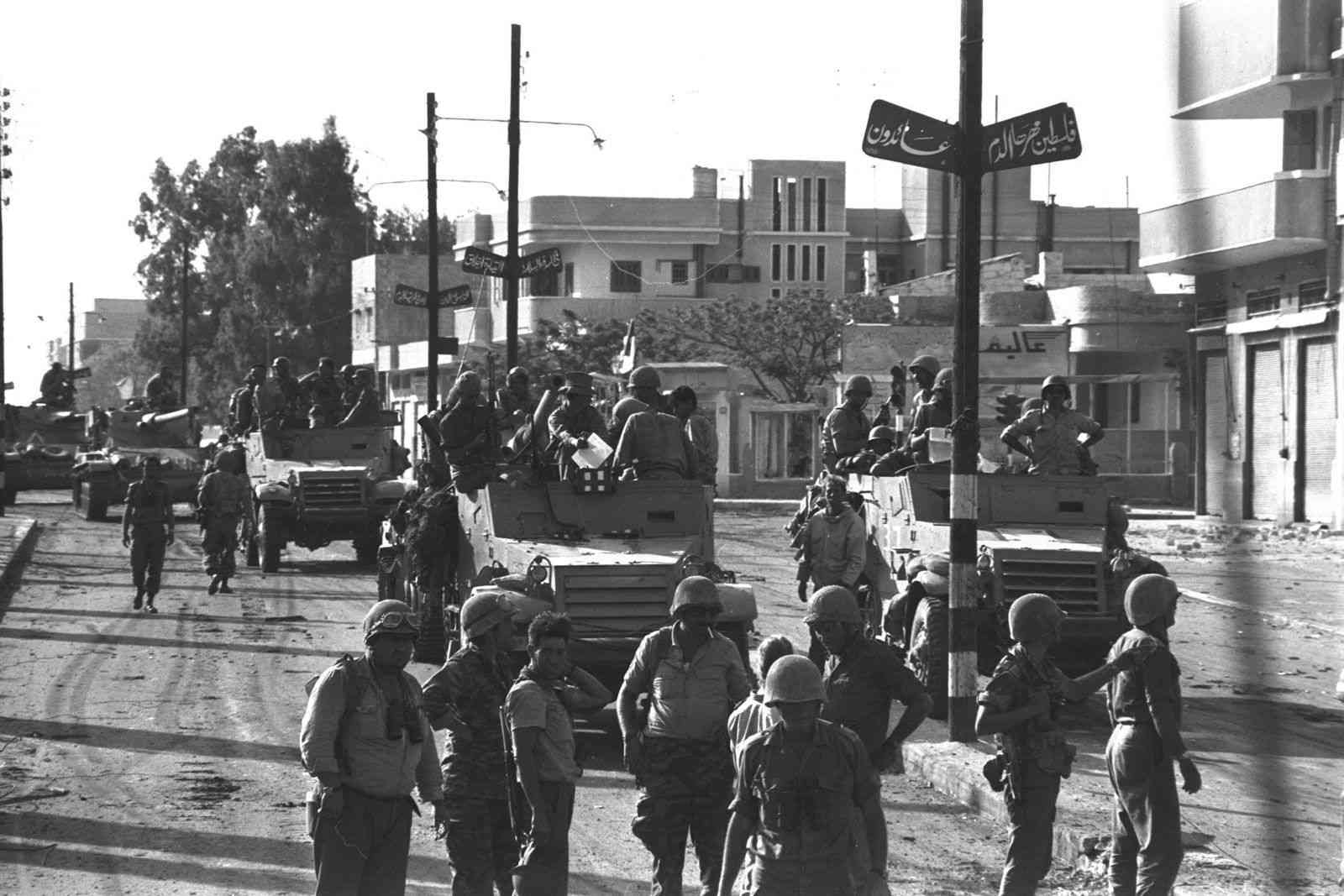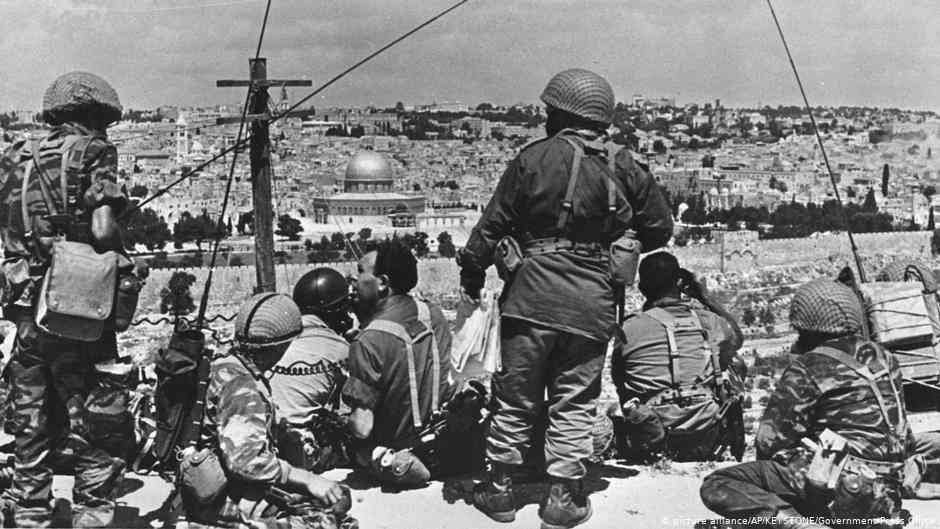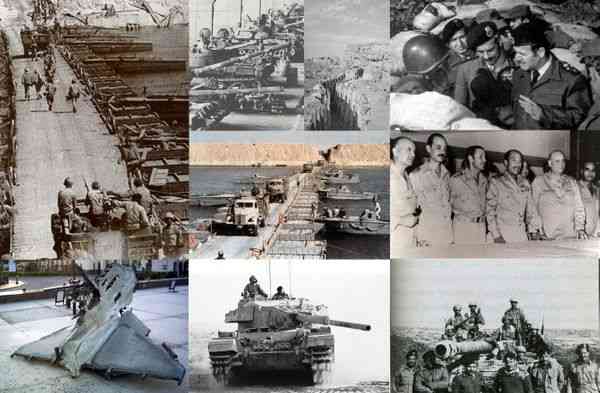It is what is known as the setback war, A war that Israel launched on the fifth of June 1967 against three Arab countries, mainly Egypt, Syria and Jordan. It lasted for six days and ended with the victory of Israel and its occupation of large parts of the three countries and managing its military equipment.
Causes of war:
The causes of the 1967 war were numerous, but they were mainly divided into direct and indirect causes...
Direct causes :
On the twenty-second of May 1967, Egypt demanded the United Nations to withdraw its forces from the Sinai, then began to mobilize its army in the Sinai, and closed the Strait of Tiran in the face of Israeli ships, which prompted Israel to consider such actions as an outright aggression against it.

Indirect causes:
Israel considered the tripartite aggression that came after the Sinai Campaign in 1956 as a threat to its security. The events included the efforts to arm former Egyptian President Gamal Abdel Nasser, as well as Syrian attacks on Jewish settlements on the Syrian front and opposite the Jordanian front.
planning for war:
Israel began planning for war on the three countries at the beginning of June 1967, and according to the sources, the number and equipment of the combined Arab armies was greater than the number of Israeli soldiers and their equipment, but the efficiency of the Israeli army came from its reliance on Western weapons coming from (France, Britain and America), while the countries adopted Arabia - with the exception of Jordan - on Soviet arms.
Outbreak of war:

At exactly 8:45 am on June 5, 1967, and for three hours, the Zionist entity's planes began bombing the Sinai, the Delta, Cairo, and the Nile Valley in Egypt.
The air attack consisted of three strikes:
The first raid was carried out by 174 aircraft.
The second raid was carried out by 161 aircraft.
The third raid was carried out by 157 aircraft.
Consequently, the total number of raids was 492, which resulted in the following:
-Destruction of 25 military airfields and 85 percent of the Egyptian military air force at the airports without moving.
-According to the Zionist narrative, 209 out of 340 Egyptian aircraft were destroyed as follows:
1. 30 Tu-16s
2. 27 Ilyushin bombers
3. 12 Sukhoi v
4. 90 combat aircraft, transport and helicopters [1]
According to Israeli sources, 416 Arab fighters were destroyed, while Israel lost 26. [2]
The outcome of the Israeli bombing of Syria and Jordan:

-The bombing of several Jordanian airports, including Amman Airport and Mafraq Airport.
-Destruction of 22 combat aircraft, 5 transport aircraft, and two helicopters, all belonging to the Jordanian army.
-The bombing of Syrian airports, including Damir airport and Damascus airport.
-32 MiGs and two Ilyushin 28 bombers belonging to the Syrian army destroyed.
-As for the Iraqi participation in the war, it was present, but not like Egypt, Syria and Jordan. Israel attacked the Iraqi air base H3.
Arab response to air strikes:
Jordan: The Jordanian air force bombed an Israeli airport near Kfar Sarkin (a Jewish settlement).
Syria: The Syrian air force bombed the oil refineries in occupied Haifa and the Megiddo air base.
Iraq: Iraqi aircraft bombed the town of Netanya on the Mediterranean coast.
The course of the war on the battle fronts:
The Egyptian front:
It was the central front for Israel.
First day :
At 9:15, the Israeli forces began to penetrate the front line of the Egyptian front in Sinai, then destroyed the 7th and 2nd Infantry Divisions, which were a focus of the Egyptian army.
The second day:
On June 6, the city of El-Arish fell and Israel entered with armored vehicles from the northern axis, and Israel announced this evening the news of its arrival at the Suez Canal, which is why it was called the Blitzkrieg (a military concept used in offensive operations. It depends on using the element of surprise and attack quickly to prevent the enemy from holding out in defense) They also controlled the cities of Gaza and Khan Yunis in Palestine, but they were under Egyptian sovereignty.
On the same day, the Security Council issued Resolution No. 233 stipulating a ceasefire, which meant as an international recognition of Israel’s occupation of Egyptian lands and denying Egypt the right to take it back.
The third day:
Because of the ceasefire on the Jordanian front, and because of the psychological pressure on the Egyptian soldiers, they began to feel completely collapsed.
The fourth day :
Preparations began to defend the entrances to Cairo and Ismailia, as the Israeli forces approached the Suez Canal.
The fifth day:
As a result of the ceasefire, the Egyptian forces withdrew from the Sinai, which led to the Israeli occupation of the entire Sinai until Sharm el-Sheikh, and then was followed by the announcement of Resolution No. 235, which affirms the ceasefire, and in light of this desperate atmosphere, Gamal Abdel Nasser resigned.
The sixth day:
As a result of the resignation of Gamal Abdel Nasser, Deputy Supreme Commander Abdel Hakim Amer resigned, followed by the Minister of War, Shams Badran, which prompted people to demonstrate demanding Gamal's return to the presidency of Egypt.Who is already back.
[3]
The Jordanian Front:
On the first day, at 11 am, Jordan bombed the cities of Jerusalem and Tel Aviv and crossed into southern Jerusalem, and the Israeli air force bombed all of Jordan’s airports, then that afternoon bombed the West Bank and reached Jenin.
On the second day, Nablus fell, and Israeli forces headed to the Jordan River and clashed also around East Jerusalem
On the third or last day of the Jordanian front, Israel occupied East Jerusalem and reached the Al-Buraq Wall at ten in the morning, then control the entire city that evening.
The Syrian front:
On the first day, an exchange of airstrikes occurred, while Syria's attempt to penetrate Israel was thwarted , Then the clashes continued without new until the sixth day in which Syria agreed to the cease-fire decision due to the arrival of the Israeli forces to the Syrian city of Quneitra, and that was 6:30in the evening.
Post-war facts:
-The war stopped on the 10th of June.
- United Nations Resolution No. 236 was issued, which stipulates condemning any movement of forces, on June 11th.
-Israel won an important victory on the military, economic and political levels.
-The Arab countries lost a lot of their lands.
-The emigration of 300 to 400,000 Arabs from the West Bank and Gaza Strip and the villages residing along the Suez Canal, which created a new problem for the Palestinian refugees in addition to the problems of the refugees of the 48th War.
-The displacement of 100 thousand citizens of the Golan Heights to Syria.
Land losses:

-Lands from the Sinai Peninsula, the Golan Heights, and the West Bank, including East Jerusalem and the Gaza Strip.
-The total of the occupied lands from the Arab countries is 69,347 square kilometers, which is three times the area that Israel occupied in the year 48.
Finally, as a result of the loss of the Arab countries in the 1967 war, they are still suffering today from the resulting imbalance with a large number of refugees in Arab countries and in the diaspora around the world under difficult conditions such as poverty, hunger and disease.
Sources :
[1] 5/6/2016 https://www.aljazeera.net/
[2]All rights reserved to the state of Israel © 2013
[3]Shahed Ala Harb 67 book - written by Lieutenant General Salah Al-Hadidi
https://drive.google.com/file/d/1WnUOMOsOY75WIBXsXBqIMytISHj6Aia9/view?usp=sharing


